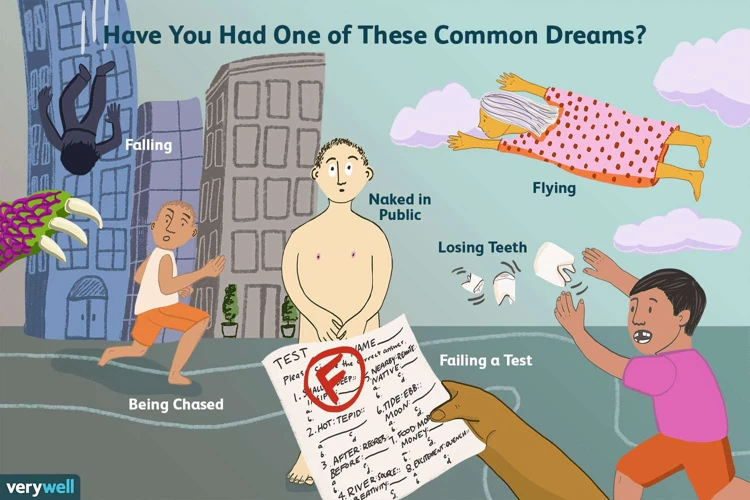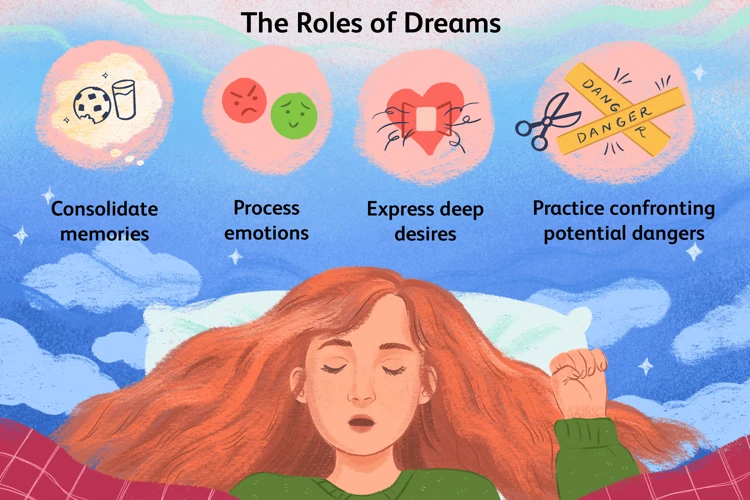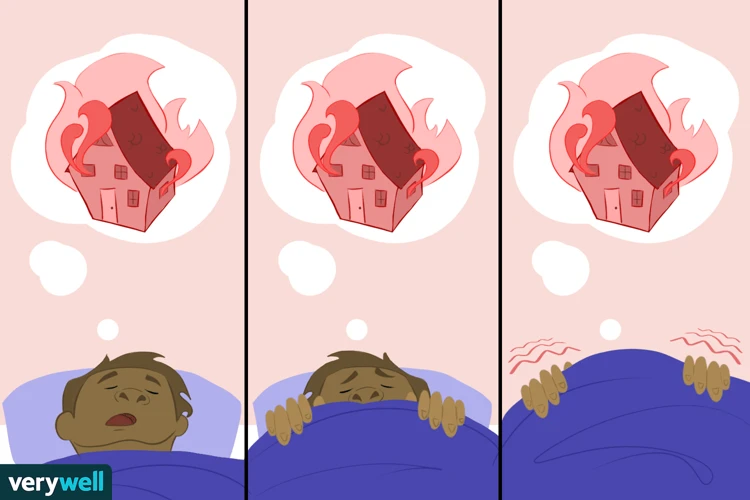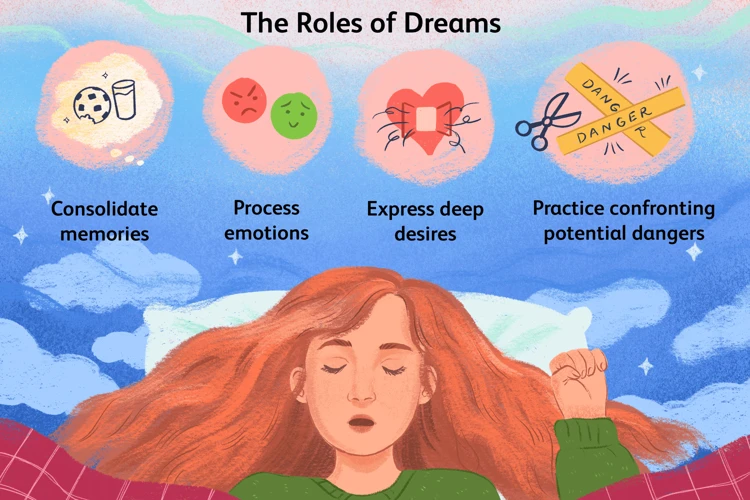For those who have experienced the unsettling feeling of waking up in the middle of the night, drenched in sweat and filled with fear from a vivid and disturbing dream, the connection between nightmares and sleep disorders can often leave them perplexed. Sleep disorders such as insomnia, sleep apnea, narcolepsy, restless leg syndrome, and REM sleep behavior disorder can significantly impact the quality of sleep and contribute to the occurrence of nightmares. Understanding the link between these two phenomena is crucial in unraveling the mysteries of the night and finding effective treatments to ensure a peaceful slumber. So, let us dive deeper into the intricacies of nightmares and sleep disorders, and discover the fascinating relationship between them.
The Nature of Nightmares

Nightmares, often associated with intense fear, anxiety, and terror, are vivid and distressing dreams that occur during the rapid eye movement (REM) stage of sleep. They can leave individuals feeling unsettled and, in some cases, fearful of falling asleep again. While nightmares can be a normal part of sleep and may occur occasionally, they can also be a symptom of an underlying sleep disorder or psychological condition. Nightmares can vary in content, with common themes including being chased, falling, or facing a life-threatening situation. They can also be influenced by personal experiences, emotions, and anxieties. In some cases, nightmares can be a manifestation of unresolved trauma or stress. Exploring the deeper meaning and symbolism behind nightmares can provide valuable insight into the subconscious mind and provide a pathway towards healing and understanding. Recurring nightmares, in particular, can be especially distressing and may require further exploration to uncover their underlying causes and triggers. Understanding the nature of nightmares is a crucial step in deciphering the complex world of sleep and its impact on our well-being.
Common Sleep Disorders

Common sleep disorders can significantly disrupt the quality and quantity of sleep, leading to a range of physical and mental health issues. Insomnia, characterized by difficulty falling asleep or staying asleep, affects millions of people worldwide and can contribute to the occurrence of nightmares. Sleep apnea, a condition where breathing repeatedly stops and starts during sleep, can result in fragmented sleep and increased vulnerability to nightmares. Narcolepsy, a neurological disorder causing excessive daytime sleepiness and sudden sleep attacks, may also be accompanied by the presence of nightmares. Restless leg syndrome is a condition characterized by an irresistible urge to move the legs, often leading to difficulty falling asleep and disrupted sleep patterns, which can contribute to the frequency of nightmares. Additionally, REM sleep behavior disorder, a condition where individuals physically act out their dreams, can result in vivid and potentially violent nightmares. Understanding these common sleep disorders and their potential connections to nightmares is essential in order to address and manage sleep-related disturbances effectively.
Insomnia
Insomnia, a common sleep disorder, is characterized by difficulty falling asleep, staying asleep, or experiencing non-restorative sleep. The persistent sleeplessness associated with insomnia can have a profound impact on an individual’s overall well-being and can lead to a variety of physical and mental health issues. When it comes to the relationship between insomnia and nightmares, research suggests a complex interplay between the two. Nightmares and insomnia often go hand in hand, as the anxiety and discomfort caused by the inability to sleep can trigger distressing and vivid dreams during the limited periods of sleep individuals with insomnia do manage to obtain. This creates a vicious cycle, where the nightmares further disrupt sleep, leading to increased daytime fatigue and worsening of insomnia symptoms. Furthermore, insomnia can contribute to the development of anxiety disorders which in turn may increase the likelihood of nightmares. The exact mechanisms underlying the link between insomnia and nightmares are not fully understood, but it is believed that disruptions in the sleep-wake cycle and heightened emotional arousal play a significant role. Managing insomnia through behavioral and therapeutic interventions can help alleviate the occurrence of nightmares and improve overall sleep quality. Understanding and addressing the complexities of insomnia is crucial in unraveling its impact on the occurrence of nightmares. (To learn more about the relationship between nightmares and anxiety disorders, click here.)
Sleep Apnea
Sleep apnea is a common sleep disorder characterized by pauses in breathing or shallow breathing during sleep. These disruptions in breathing can last for seconds to minutes and can occur multiple times throughout the night. The most common type of sleep apnea is obstructive sleep apnea (OSA), which happens when the muscles in the throat relax and block the airway. This can lead to a decrease in oxygen levels in the blood and subsequent awakenings throughout the night.
Interestingly, sleep apnea has been found to have a connection with nightmares. The interrupted breathing patterns and resulting low oxygen levels can cause increased arousal during sleep. This arousal can trigger vivid and intense dreams, including nightmares. Additionally, the frequent awakenings throughout the night can disrupt the normal sleep cycle, leading to an increase in REM sleep, which is the stage of sleep associated with dreaming.
Sleep apnea-related nightmares often involve suffocation, drowning, or being unable to breathe. These dreams can be incredibly distressing, causing fear and anxiety upon waking up. The presence of nightmares in individuals with sleep apnea can further exacerbate sleep disturbances, making it difficult to achieve restful sleep. As a result, the cycle of poor sleep, nightmares, and daytime fatigue continues, leading to a significant impact on overall well-being.
Addressing sleep apnea through the use of continuous positive airway pressure (CPAP) therapy or other treatment options can help alleviate the severity of both sleep apnea and the associated nightmares. By ensuring proper airflow and reducing respiratory disturbances during sleep, individuals with sleep apnea can experience a reduction in nightmares and improve their sleep quality. Exploring treatment options for sleep apnea is essential for breaking the cycle of disrupted sleep and nightmares.
Understanding the relationship between sleep apnea and nightmares is crucial for healthcare professionals and individuals experiencing these issues. By recognizing the impact that sleep apnea can have on the occurrence of nightmares, individuals can seek appropriate diagnosis and treatment to improve their sleep and overall quality of life.
Narcolepsy
Narcolepsy is a neurological sleep disorder characterized by excessive daytime sleepiness and sudden, uncontrollable episodes of falling asleep. These episodes, known as “sleep attacks,” can occur at any time, often at inappropriate or inconvenient moments. Individuals with narcolepsy may experience fragmented sleep patterns at night, leading to a sense of constant fatigue during the day. In addition to excessive sleepiness, narcolepsy can also cause other symptoms such as cataplexy, which is the sudden loss of muscle tone triggered by strong emotions. This can lead to episodes of sudden muscle weakness or even temporary paralysis. Other common symptoms of narcolepsy include sleep paralysis, hallucinations, and disrupted nighttime sleep. The exact cause of narcolepsy is not fully understood, but it is believed to involve a combination of genetic factors and the loss of certain cells in the brain that promote wakefulness. Despite its challenges, narcolepsy can be managed with lifestyle modifications, medication, and support from healthcare professionals. Understanding the complexities of narcolepsy can provide insights into the relationship between this sleep disorder and the occurrence of nightmares.
Restless Leg Syndrome
Restless Leg Syndrome (RLS) is a sleep disorder characterized by an uncontrollable urge to move the legs, often accompanied by uncomfortable sensations. Individuals with RLS typically experience these symptoms during periods of rest or inactivity, such as when lying down or sitting for long periods. The sensations can range from aching, tingling, and crawling to a deep-seated need to constantly move the legs. This movement can provide temporary relief from the discomfort. The exact cause of RLS is still unknown, but research suggests that it may be related to disruptions in the brain’s dopamine system, as well as genetic factors. RLS can significantly impact sleep quality, as the constant movement and discomfort can prevent individuals from falling asleep or staying asleep throughout the night. The lack of quality sleep can lead to daytime fatigue and drowsiness. While the direct link between RLS and nightmares is still being explored, it is not uncommon for individuals with RLS to report experiencing vivid and unsettling dreams. These dreams may be influenced by the discomfort and sleep disruption caused by RLS. Understanding the potential connection between RLS and nightmares can provide insights into the complex interactions between sleep disorders and the subconscious mind. For individuals seeking to unravel the mystery of their sleep disturbances, exploring the symbolism behind nightmares or delving into the underlying causes of recurring nightmares can offer valuable avenues of self-discovery and potential resolution.
REM Sleep Behavior Disorder
REM Sleep Behavior Disorder (RBD) is a sleep disorder characterized by the loss of muscle atonia during REM sleep, leading to the enactment of dreams. Unlike most individuals who experience temporary muscle paralysis during REM sleep, those with RBD can physically act out their dreams, sometimes with aggressive or violent movements. This disorder can be quite perplexing and unsettling for both the individual experiencing it and their sleep partner or family members. RBD can result in injuries not only to the person with the disorder but also to those around them. The exact cause of RBD is still not fully understood, but it has been linked to neurodegenerative disorders such as Parkinson’s disease. Symptoms of RBD often include vivid and intense dreams filled with action and physical movements. These dreams may involve scenarios where the individual is being attacked or engaging in physically demanding activities. The onset of RBD can happen gradually over time or appear suddenly. Diagnosing RBD usually involves conducting a thorough sleep evaluation, including a review of the individual’s medical history, physical examination, and an overnight sleep study. Treatment for RBD typically involves managing and controlling symptoms to ensure the safety of the individual and their sleep partner. Medications such as clonazepam, melatonin, or other muscle relaxants can be prescribed to help reduce the occurrence of RBD episodes. Additionally, creating a safe sleep environment by removing potentially hazardous objects from the bedroom can also be beneficial. Exploring the connection between RBD and nightmares can provide valuable insights into the underlying causes and mechanisms of both conditions. Understanding the connection can assist in developing effective treatment strategies and provide a better understanding of the intricate nature of sleep disorders.
The Relationship Between Nightmares and Sleep Disorders

The relationship between nightmares and sleep disorders is complex and multifaceted. While nightmares can occur independently, they are often intertwined with various sleep disorders, further complicating the sleep experience. For instance, individuals with insomnia may find themselves caught in a cycle of sleep deprivation and heightened emotional stress, which can increase the likelihood of experiencing nightmares. Sleep apnea, a condition characterized by interrupted breathing during sleep, can also contribute to the occurrence of nightmares as the body struggles to maintain a stable sleep pattern. Narcolepsy, a neurological disorder that affects the brain’s ability to regulate sleep-wake cycles, can lead to instances of rapid eye movement (REM) sleep intruding into wakefulness, resulting in vivid and unsettling dreams. Restless leg syndrome, characterized by uncomfortable sensations in the legs, can disrupt sleep and potentially trigger nightmares as well. Finally, individuals with REM sleep behavior disorder may act out their dreams physically, potentially causing harm to themselves or their sleep partners. Understanding the intricate relationship between nightmares and sleep disorders is crucial in devising effective treatment strategies and promoting restful sleep. Exploring the underlying causes and seeking therapy or medical intervention, such as cognitive-behavioral therapy or medication, can offer relief and improve the quality of life for those struggling with this intricate convergence of sleep difficulties.
Recurring Nightmares and Insomnia
Recurring nightmares, characterized by the repetitive occurrence of the same or similar distressing dreams, can be closely linked to insomnia, a sleep disorder characterized by difficulty falling asleep or staying asleep. The relationship between these two phenomena is complex and often intertwined.
Insomnia can contribute to an increased risk of experiencing recurring nightmares. When individuals struggle to fall asleep or stay asleep, it disrupts the normal sleep cycles, including the REM stage where most dreams, including nightmares, occur. This disruption can lead to a higher likelihood of remembering and being disturbed by nightmares. The anxiety and frustration caused by insomnia can heighten emotional distress, making nightmares more intense and frequent.
On the other hand, recurring nightmares can also contribute to the development or worsening of insomnia. The fear of experiencing the same distressing dream repeatedly can create a psychological barrier to falling asleep, leading to increased anxiety and sleep difficulties. The fear of falling asleep may result in hyperarousal and fragmented sleep, further exacerbating insomnia symptoms.
To break this cycle, it is crucial to address both the underlying causes of recurring nightmares and insomnia. Exploring the symbolism and underlying emotions of nightmares can provide valuable insights into unresolved traumas or anxieties that may be contributing to their recurrence.Exploring the symbolism and underlying emotions of nightmares can provide valuable insights into unresolved traumas or anxieties that may be contributing to their recurrence, thus aiding the process of resolving recurring nightmares. Seeking therapy or counseling, such as cognitive-behavioral therapy for insomnia (CBT-I), can also be beneficial in managing both nightmares and insomnia. By addressing the root causes, improving sleep hygiene, and learning coping strategies, individuals can pave the way for a more restful sleep and decreased frequency of recurring nightmares. Understanding the intricate relationship between recurring nightmares and insomnia is key to effectively addressing and managing both sleep disturbances.
Sleep Apnea and Nightmares
Sleep apnea, a common sleep disorder characterized by pauses in breathing during sleep, can have a significant impact on the occurrence of nightmares. Sleep apnea and nightmares can be linked through various mechanisms. First, the interruptions in breathing caused by sleep apnea can lead to fragmented sleep patterns and decreased sleep quality. This disruption in the normal sleep cycle can increase the likelihood of experiencing nightmares. Additionally, the physiological changes associated with sleep apnea, such as low oxygen levels and increased carbon dioxide levels, can trigger a stress response in the body. This physiological stress can manifest as vivid and distressing dreams during the REM stage of sleep, potentially leading to nightmares.
The recurring awakenings that characterize sleep apnea can create an opportunity for the individual to remember more of their dreams, including any nightmares. This awareness of nightmares can further intensify the distress associated with sleep apnea and impact the overall sleep experience. It is important to note that not all individuals with sleep apnea will experience nightmares, but the relationship between the two can be significant for some individuals.
To address the link between sleep apnea and nightmares, proper diagnosis and treatment are essential. Treating sleep apnea with interventions such as continuous positive airway pressure (CPAP) machines or oral appliances can help improve sleep quality and reduce the occurrence of nightmares. By addressing the underlying sleep disorder, individuals may experience a reduction in nightmares and an overall improvement in sleep-related symptoms. Exploring the connection between sleep apnea and nightmares can provide valuable insights into the intricate relationship between sleep disorders and dream experiences.
Narcolepsy and Nightmares
Narcolepsy, a neurological disorder characterized by excessive daytime sleepiness and sudden, uncontrollable episodes of sleep, can also be linked to nightmares. People with narcolepsy often experience disrupted sleep patterns, including fragmented REM sleep, which can contribute to the occurrence of nightmares. During REM sleep, when dreams typically occur, the brain’s activity is heightened, and vivid imagery is generated. In individuals with narcolepsy, this heightened activity during REM sleep can lead to intense and vivid nightmares. These nightmares can be distressing and may further disrupt sleep, exacerbating the symptoms of narcolepsy. It’s important for individuals with narcolepsy to discuss their nightmares with their healthcare provider to explore potential treatment options and strategies for managing both the narcolepsy symptoms and the accompanying nightmares. Exploring the symbolism and underlying causes of these nightmares, such as through therapy or dream analysis, can also provide valuable insights into the subconscious mind and potentially alleviate some of the distress associated with them. Understanding the relationship between narcolepsy and nightmares is essential for developing comprehensive treatment plans and improving sleep quality for individuals affected by this sleep disorder.
Restless Leg Syndrome and Nightmares
Restless Leg Syndrome (RLS) is a neurological disorder characterized by an uncontrollable urge to move the legs, often accompanied by uncomfortable sensations such as tingling, itching, or crawling. This condition primarily affects sleep, as the symptoms tend to worsen during periods of rest or inactivity. While RLS is known to disrupt sleep by causing frequent movements and discomfort, its connection to nightmares is less understood but worth exploring.
Individuals with RLS may experience sleep disturbances due to the constant need to move their legs, leading to fragmented sleep patterns. These disrupted sleep cycles can potentially impact the REM stage of sleep, where dreams and nightmares occur most frequently. The discomfort and interrupted sleep caused by RLS may increase the likelihood of nightmares or influence their content. However, it’s essential to note that nightmares associated with RLS are often not directly caused by the condition itself, but rather by the sleep disturbances it produces.
In some cases, the frustration and distress caused by RLS symptoms may contribute to anxiety or stress levels, which can further heighten the occurrence of nightmares. Exploring the deeper symbolism and meaning behind these nightmares can provide valuable insights into the emotional and psychological impact of RLS on individuals. While there is limited research specifically linking RLS to nightmares, addressing the underlying sleep issues caused by RLS, such as through medication or lifestyle modifications, may help alleviate the frequency and intensity of both restless legs and associated nightmares.
Understanding the complex relationship between Restless Leg Syndrome and nightmares is crucial in developing comprehensive treatment strategies for individuals affected by this disorder. By addressing both the physical symptoms and the potential emotional impact, individuals with RLS can work towards achieving better sleep quality and a reduction in disturbing dream experiences.
REM Sleep Behavior Disorder and Nightmares
REM Sleep Behavior Disorder (RBD) is a sleep disorder characterized by the enactment of dreams during the REM sleep phase. Unlike typical dreams where the body remains still, individuals experiencing RBD physically act out their dreams, sometimes to the extent of violent behaviors. This disorder is often associated with nightmares that are intense, vivid, and may involve scenarios of physical aggression or danger. It is believed that the normal inhibition of muscle movement during REM sleep is disrupted in RBD, leading to uncontrolled movements and potentially harmful behaviors. This can be distressing for both the individual experiencing RBD and their sleeping partner. RBD is typically diagnosed through a combination of clinical evaluations, sleep studies, and monitoring of movements during sleep. Treatment for RBD often involves medications that suppress muscle activity during the REM phase, effectively preventing physical movements associated with dream enactment. It is essential for individuals with RBD to seek medical attention as it can lead to injuries to themselves or others during sleep. Exploring the connection between RBD and nightmares can provide valuable insights into the underlying neurological mechanisms and offer avenues for managing and treating this unique sleep disorder.
The Causes of Nightmares in Sleep Disorders

The causes of nightmares in sleep disorders are multifaceted and can vary depending on the specific sleep disorder a person is experiencing. Here are some of the common causes:
1. Disrupted Sleep Patterns: Sleep disorders like insomnia, sleep apnea, and restless leg syndrome can disrupt the normal sleep cycle and lead to fragmented sleep. These disruptions can increase the likelihood of nightmares occurring during the REM stage of sleep, where dreams are most vivid. The irregularities in sleep patterns can create a breeding ground for intense and anxiety-provoking dreams.
2. Psychological Factors: Underlying psychological factors play a significant role in the occurrence of nightmares within sleep disorders. Anxiety disorders, unresolved trauma, stress, and other emotional disturbances can contribute to the content and intensity of nightmares. Exploring the symbolism of nightmares can provide valuable insights into these psychological factors, potentially uncovering unresolved issues that may be manifesting during sleep.
3. Medications: Certain medications used to treat sleep disorders, such as antidepressants and beta-blockers, can increase the likelihood of nightmares as a side effect. It is important to discuss any medication-related concerns with a healthcare professional to explore alternative options or adjust dosage if necessary.
4. Sleep Deprivation: Sleep disorders themselves can lead to sleep deprivation, which can further exacerbate the occurrence of nightmares. The lack of quality sleep can impact the brain’s ability to process emotions and memories, resulting in heightened dream intensity and distress.
By understanding the causes of nightmares within sleep disorders, individuals and healthcare professionals can work together to address the root causes, alleviate symptoms, and develop strategies for a more restful sleep experience. Exploring the deeper meaning and symbolism of nightmares, as referenced in /exploring-symbolism-nightmares/, can also offer valuable insights into the underlying psychological factors contributing to their occurrence. Additionally, for those experiencing recurring nightmares, /understanding-recurring-nightmares/, delving deeper into the triggers and patterns of these dreams can provide a pathway towards healing and resolution.
Effects of Nightmares on Sleep Disorders

The effects of nightmares on sleep disorders can be significant, exacerbating the symptoms and disrupting the overall quality of sleep. Here are some ways in which nightmares can impact sleep disorders:
1. Increased Sleep Fragmentation: Nightmares often cause individuals to wake up abruptly during the night, leading to frequent sleep disruptions. This can result in fragmented sleep patterns, making it difficult to achieve restorative sleep and worsening the symptoms of sleep disorders.
2. Heightened Anxiety and Fear: Nightmares can trigger intense emotions such as anxiety and fear, which can persist even after waking up. These heightened emotions can make it challenging for individuals with sleep disorders to relax and fall back asleep, further complicating their ability to achieve a restful night’s sleep.
3. Daytime Sleepiness: The emotional distress caused by nightmares can lead to increased daytime sleepiness in individuals with sleep disorders. Feeling tired and fatigued during the day can negatively impact their overall functioning, productivity, and quality of life.
4. Impact on Mental Health: Nightmares can have a profound impact on mental health, contributing to increased levels of stress, anxiety, and depression. For individuals already struggling with sleep disorders, the addition of nightmares can further worsen their psychological well-being.
5. Sleep Avoidance: Some individuals may develop a fear of falling asleep due to the anticipation of experiencing nightmares. This can lead to sleep avoidance behavior, where individuals purposely try to stay awake or restrict their sleep to avoid the distressing dreams. Sleep avoidance can perpetuate sleep disorders and impact overall sleep hygiene.
It is essential to address the effects of nightmares on sleep disorders to develop comprehensive treatment plans that target both the underlying sleep disorder and managing nightmares effectively. By prioritizing the reduction of nightmares, individuals can improve their overall sleep quality and alleviate the negative impact that sleep disorders and nightmares have on their well-being.
Treatments for Nightmares and Sleep Disorders
When it comes to treating nightmares and sleep disorders, a variety of approaches can be effective in improving sleep quality and reducing the occurrence of nightmares. Here are some common treatments and interventions:
1. Cognitive Behavioral Therapy for Insomnia (CBT-I): CBT-I is a widely recommended treatment for insomnia. It focuses on identifying and changing negative thoughts and behaviors that contribute to sleep difficulties. Through techniques such as sleep restriction, stimulus control, and cognitive restructuring, CBT-I can help improve sleep patterns and reduce the frequency of nightmares.
2. Continuous Positive Airway Pressure (CPAP) therapy: CPAP therapy is a common treatment for sleep apnea. It involves wearing a mask during sleep that delivers pressurized air to keep the airway open. By preventing interruptions in breathing, CPAP can improve sleep quality and reduce the likelihood of nightmares associated with sleep apnea.
3. Medications: In some cases, medications may be prescribed to treat specific sleep disorders or manage symptoms associated with nightmares. For example, medications to alleviate restless leg syndrome (RLS) symptoms or regulate sleep-wake cycles in narcolepsy can help reduce the occurrence of associated nightmares.
4. Imagery Rehearsal Therapy (IRT): IRT is a technique commonly used to address nightmares. It involves rewriting the content of a recurrent nightmare during wakefulness and rehearsing a more positive or less distressing outcome. By repeatedly practicing the revised dream script, individuals can decrease the frequency and intensity of nightmares.
5. Lifestyle changes: Making certain lifestyle modifications can also contribute to better sleep and a reduction in nightmares. This may include maintaining a consistent sleep schedule, creating a relaxing bedtime routine, avoiding stimulating activities close to bedtime, and creating a comfortable sleep environment.
6. Stress management techniques: Since stress and anxiety can contribute to both nightmares and sleep disorders, implementing stress management techniques can be beneficial. This can include practices such as mindfulness meditation, deep breathing exercises, and engaging in relaxation activities before bed.
It’s important to note that treatment approaches may vary depending on the specific sleep disorder and individual needs. Consulting with a healthcare professional or sleep specialist is recommended to determine the most suitable treatment plan for addressing nightmares and sleep disorders effectively.
Conclusion
In conclusion, the link between nightmares and sleep disorders is a complex and multifaceted one. Nightmares can be a common occurrence during sleep, but they can also be symptomatic of underlying sleep disorders such as insomnia, sleep apnea, narcolepsy, restless leg syndrome, and REM sleep behavior disorder. These sleep disorders can disrupt the normal sleep cycle, leading to an increased likelihood of experiencing nightmares. The causes of nightmares in sleep disorders can vary, ranging from psychological factors such as anxiety and stress to physiological factors such as sleep deprivation or abnormal brain activity during REM sleep. The effects of nightmares on sleep disorders can be detrimental, further exacerbating sleep disturbances and impairing overall sleep quality. However, there are treatments available to address both nightmares and sleep disorders, including cognitive-behavioral therapy, medication, and lifestyle modifications. By seeking professional help and adopting appropriate strategies, individuals can find relief from nightmares and improve their overall sleep health. It is important to remember that unraveling the link between nightmares and sleep disorders requires a personalized approach, as each individual’s experience is unique. Through continued research and understanding, we can continue to shed light on the fascinating connection between nightmares and sleep disorders, ultimately leading to better sleep and well-being for all.
Frequently Asked Questions
1. Can nightmares be a symptom of a sleep disorder?
Yes, nightmares can be a symptom of various sleep disorders, such as insomnia, sleep apnea, narcolepsy, restless leg syndrome, and REM sleep behavior disorder. These disorders can disrupt the normal sleep cycle and contribute to the occurrence of nightmares.
2. Are nightmares more common in certain age groups?
Nightmares can occur at any age, but they are more common in children and tend to decrease in frequency as we get older. However, some adults may still experience nightmares, especially if they have an underlying sleep disorder or are undergoing significant stress or trauma.
3. How can I manage nightmares?
There are several strategies that can help manage nightmares. Keeping a regular sleep schedule, practicing relaxation techniques, creating a calming bedtime routine, creating a comfortable sleep environment, and addressing any underlying sleep disorders or psychological issues can all contribute to reducing the frequency and intensity of nightmares.
4. Are nightmares always a cause for concern?
Not necessarily. Occasional nightmares are a normal part of sleep and may not indicate a significant issue. However, if nightmares become persistent, recurring, or severely impact your daily life, it may be beneficial to consult a healthcare professional to rule out any underlying sleep disorders or psychological conditions.
5. Can medications cause nightmares?
Yes, certain medications, including antidepressants, beta blockers, and some sleep aids, can potentially trigger nightmares as a side effect. If you suspect that your medication is causing nightmares, it is advisable to consult with your healthcare provider to explore alternative options or adjust the dosage.
6. Is there a link between nightmares and anxiety disorders?
Absolutely. Nightmares can often be associated with anxiety disorders such as generalized anxiety disorder, post-traumatic stress disorder (PTSD), and panic disorder. The heightened levels of anxiety can manifest in the form of vivid and distressing dreams.
7. Can nightmares be a reflection of suppressed emotions?
Yes, nightmares can sometimes be a manifestation of suppressed or unresolved emotions. Traumatic experiences, stress, and unresolved psychological conflicts can find their way into our dreams, resulting in frequent nightmares.
8. Can recurring nightmares be treated?
Yes, recurring nightmares can be treated. Techniques such as cognitive-behavioral therapy (CBT), image rehearsal therapy, and relaxation exercises have shown promise in reducing the frequency and intensity of recurring nightmares.
9. Can sleep hygiene practices help reduce nightmares?
Yes, practicing good sleep hygiene habits can contribute to reducing nightmares. Maintaining a consistent sleep schedule, avoiding stimulating substances before bed, creating a comfortable sleep environment, and managing stress and anxiety can all have a positive impact on the quality of your sleep and minimize the occurrence of nightmares.
10. Do nightmares have any evolutionary significance?
While the exact evolutionary significance of nightmares is not entirely understood, some theories suggest that nightmares may serve as a way for the brain to process and prepare for threatening situations. They may also act as a form of rehearsal, allowing individuals to mentally practice responding to potential dangers.








